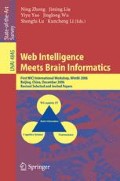Abstract
Acupuncture is a traditional Chinese healing technique, which is gaining popularity as an alternative and complementary therapeutic intervention in many worldwide countries. The acupoints are arranged on so-called meridians, which represent a network of channels each connected to a functional organic system. Our experiment is to investigate the mechanism of acupuncture at Liv3 (Taichong) and possible post-effect of acupuncture. Functional magnetic resonance imaging (fMRI) of the whole brain was performed in 18 healthy right-handed young volunteers during two stimulation paradigms: ten subjects received real acupuncture (RA) at acupoints rights Liv3 (on the hand) and other 8 subjects received sham acupuncture (SA) near . Liv3.fMRI data were analyzed using SPM99. Acupuncture at Liv3 resulted in activation of bilateral cerebella, prefrontal lobe (PF), superior parietal lobule (SPL) and inferior parietal lobule (IPL), occipital lobe, parahippocampal gyrus, insula, thalamus, lentiform nucleus; contralateral temporal pole and anterior cingulated gyrus (ACG), posterior cingulated gyrus (PCG). The PE of RA activated bilateral cerebella, PF, SPL, and IPL, occipital lobe, lentiform nucleus; isolateral temporal pole, hippocampus, insula and thalamus; contralateral head of nucleus caudate, corpus callosum, ACG and PCG. Acupuncture at Liv3 resulted in activation of visual area, limbic system and subcortical gray structures, which was considered as the specific central nervous response within the brain to acupuncture at Liv3. Moreover, the activation still existed during PE of RA. fMRI provides an objective evidence for post-effect existence, which will establish the foundations of later scientific design in acupuncture experiments.
Access this chapter
Tax calculation will be finalised at checkout
Purchases are for personal use only
Preview
Unable to display preview. Download preview PDF.
References
NIH Consensus Conference. Acupuncture. JAMA 280(17), 1518–1524 (1998)
Wu, M.T., Hsieh, J.C., Xiong, J., et al.: Central Nervous Pathway for Acupuncture Stimulation: Localization of Processing with functional MR Imaging of the Brain-preliminary Experience. Radiology 212, 133–141 (1999)
Wu, M.T., Sheen, J.M., Chuang, K.H., et al.: Neuronal Specificity of Acupuncture Response: A fMRI Study with Electroacupuncture. Neuroimage 16, 1028–1037 (2002)
Zhang, W.T., Jin, Z., Cui, G.H., et al.: Relations Between Brain Network Activation and Analgesic Effect Induced by Low vs. High Frequency Electrical Acupoint Stimulation in Different Subjects: A functional Magnetic Resonance Imaging Study. Brain Research 1982, 168–178 (2003)
Zhang, W.T., Jin, Z., Luo, F., et al.: Evidence from Brain Imaging with fMRI Supporting Functional Specificity of Acupoints in Humans. Neuroscience Letters 354, 50–53 (2004)
Biella, G., Sotgiu, M.L., Pellegata, G., et al.: Acupuncture Produces Central Activations in Pain Regions. Neuroimage 14, 60–66 (2001)
Hsieh, J.C., Tu, C.H., Chen, F.P., et al.: Activation of the Hypothalamus Characterizes the Acupuncture Stimulation at the Analgesic Point in Humans: A Positron Emission Tomography Study. Neuroscience Letters 307, 105–108 (2001)
Hui, K.K.S., Liu, J., Makris, N., et al.: Acupuncture Modulates the Limbic System and Subcortical Gray Structures of the Human Brain: Evidence From fMRI Studies in Normal Subjects. Hum. Brain Mapp. 9, 13–25 (2000)
Li, Y.Q., Chen, J.H.: JCAM. 19(4), 56 (2003)
Joannie, S.H., Daniel, W.H.: Functional Neuroimaging: Review of Methods and Applications to Acupuncture Research. Clinical Acupuncture and Oriental Medicine 2, 163–167 (2001)
Fang, J.L., Krings, T., Weidemann, J., et al.: Functional MRI in Healthy Subjects During Acupuncture: Different Effects of Needle Rotation in Real and False Acupoints. Neuroradiology 46, 359–362 (2004)
Friston, K.J., Holmes, A.P., Poline, J.B., et al.: Analysis of fMRI Time-series Revisited. Neuroimage 2, 45–53 (1995)
Noppency, U., Price, C.J.: Functional Imaging of the Semantic System: Retrieval of Sensory-experienced and Verbally Learned Knowledge. Brain and Language 84, 120–133 (2003)
Friston, K.J., Holmes, A.P., Price, C.J., et al.: Multisubject fMRI Studies and Conjunction Analyses. Neuroimage 10, 385–396 (1999)
Talairach, J., Tournoux, P.: Co-planar Stereotaxic Atlas of the Human Brain. Thieme, New York (1988)
Baron, R., Baron, Y., Disbrow, E., et al.: Brain Processing of Capsaicin-induced Secondary Hyperalgesia. A functional MRI Study. Neurology 53, 548–557 (1999)
Davis, K.D., Taylor, S.J., Crawley, A.P., et al.: Functional MRI of Pain and Attention Related Activations in the Human Cingulate Cortex. J. Neurophysiol. 77, 3370–3380 (1997)
Vogt, B.A., Ro sene, D.L., Pandya, D.N.: Thalamic and Cortical Afferents Differentiate Anterior from Posterior Cingulate Cortex in the Monkey. Science 204, 205 (1979)
Vogt, B.A., Finch, D.M., Olson, C.K.: Functional Heterogeneity in Cingulate Cortex: the Anterior Executive and Posterior Evaluative Regions. Cerebral Cortex 2, 435 (1992)
Rainville, P., Duncan, G.H., Price, D.D., et al.: Pain Affect Encoded in Human Anterior Cingulated But Not Somatosensory Cortex. Science 277, 968–971 (1997)
Casey, K.L.: Forebrain Mechanisms of Nociception and Pain: Analysis Through Imaging. Proc. Natl Acad Sci, USA 96, 7668–7674 (1999)
Siedentopf, C.M., Golaszewski, S.M., Mottaghy, F.M., et al.: Functional Magnetic Resonance Imaging Detects Activation of the Visual Association Cortex During Laser Acupuncture of the Foot in Humans. Neuroscience Letters 327, 53–56 (2002)
Gareus, I.K., Lacour, M., Schulte, A.C., et al.: Is There a Bold Response of the Visual Cortex on Stimulation of the Vision-related Acupoint GB 37? Journal of Magnetic Resonance Imaging 15, 227–232 (2002)
Author information
Authors and Affiliations
Editor information
Rights and permissions
Copyright information
© 2007 Springer-Verlag Berlin Heidelberg
About this paper
Cite this paper
Wang, W. et al. (2007). Central Nervous Processing for Acupuncture at Liv3 with fMRI: A Preliminary Experience. In: Zhong, N., Liu, J., Yao, Y., Wu, J., Lu, S., Li, K. (eds) Web Intelligence Meets Brain Informatics. WImBI 2006. Lecture Notes in Computer Science(), vol 4845. Springer, Berlin, Heidelberg. https://doi.org/10.1007/978-3-540-77028-2_13
Download citation
DOI: https://doi.org/10.1007/978-3-540-77028-2_13
Publisher Name: Springer, Berlin, Heidelberg
Print ISBN: 978-3-540-77027-5
Online ISBN: 978-3-540-77028-2
eBook Packages: Computer ScienceComputer Science (R0)

